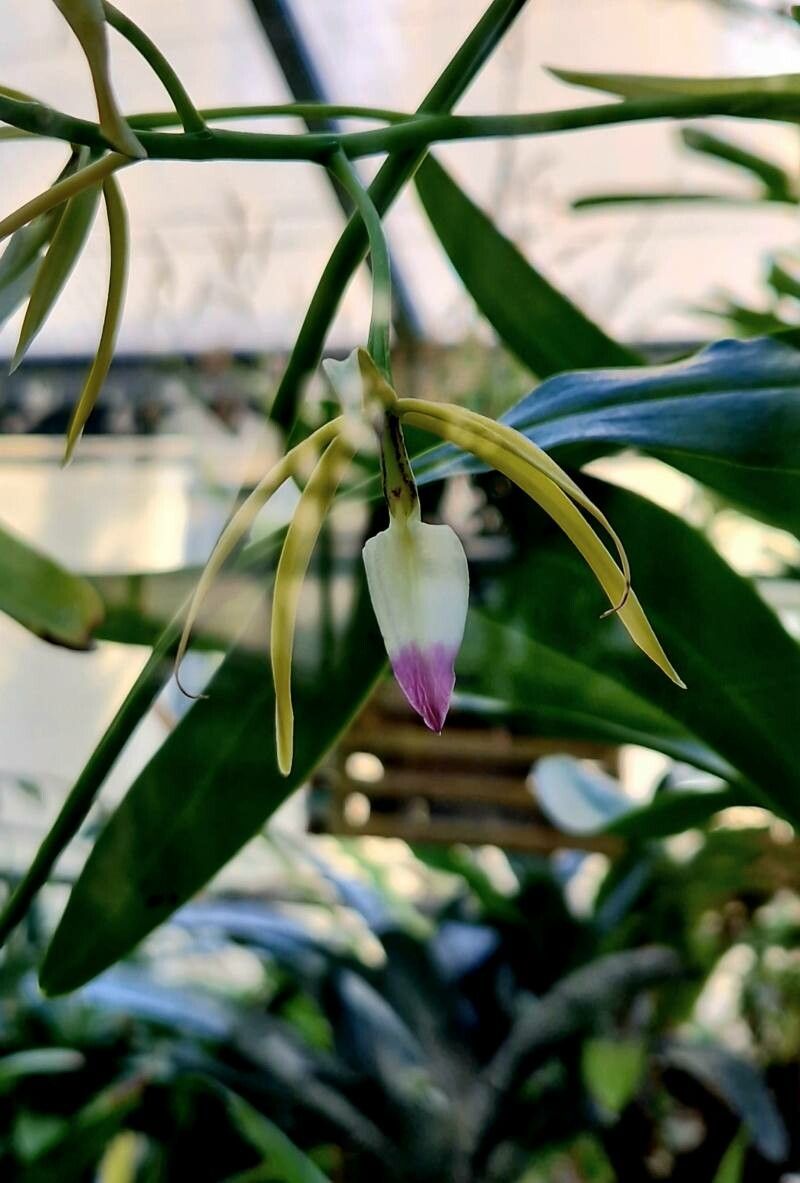Propagating Prosthechea brassavolae: A Gardener’s Guide
Introduction:
Prosthechea brassavolae, also known as the Lady of the Night orchid, is a captivating epiphytic orchid prized for its intensely fragrant, nocturnal blooms. Its slender, cane-like pseudobulbs and gracefully arching leaves contribute to its elegant appeal, making it a popular choice among orchid enthusiasts of varying skill levels. However, propagating Prosthechea brassavolae presents unique challenges, demanding patience and a nuanced understanding of orchid cultivation. This article explores various propagation methods, weighing their feasibility and outlining practical steps for success.
Seed Germination:
Currently, there are no known reliable methods for seed germination propagation of Prosthechea brassavolae. Orchid seeds are famously minute and lack endosperm, requiring a symbiotic relationship with specific fungi for germination. Replicating these conditions in a home environment is exceptionally difficult, and successful germination of Prosthechea brassavolae via seed remains largely within the realm of specialized orchid labs employing tissue culture techniques.
Cuttings:
Cuttings are not a viable method for propagating Prosthechea brassavolae. Unlike some orchids that can propagate from stem cuttings, this species lacks the necessary regenerative capabilities from stem segments.
Division:
Division is the most common and reliable method for propagating Prosthechea brassavolae.
Challenges: This method requires a mature, well-established plant with multiple pseudobulbs and roots. Dividing too aggressively can weaken or kill the parent plant. Furthermore, each division needs to have sufficient roots and pseudobulbs to become established.
Practical Tips: The ideal time is during the active growing season (spring or early summer). Carefully remove the plant from its pot and gently tease apart the rhizome, aiming for divisions with at least three to five mature pseudobulbs and a healthy root system. Plant each division in a well-draining medium suitable for orchids (e.g., bark chips, perlite). Ensure the divisions have adequate space and don’t overcrowd them.
Rewards: Division offers a relatively straightforward method for increasing the number of plants, preserving the genetic characteristics of the parent plant.
Tissue Culture:
Tissue culture is a highly specialized method capable of propagating Prosthechea brassavolae, though it requires expensive equipment and sterile techniques.
Challenges: This method necessitates a clean laboratory environment, specialized media formulations, and aseptic techniques to prevent contamination. The process is labor-intensive and involves meticulous steps.
Practical Tips: This method is best left to professionals or those with extensive experience in plant tissue culture. It involves excising small pieces of plant tissue (e.g., meristem tissue) and placing them on a sterile growth medium, typically containing nutrients, hormones, and agar.
Rewards: Tissue culture offers the ability for large-scale propagation, disease-free plants, and the potential for genetic improvement through selection of superior clones in the long term.
Conclusion:
Propagating Prosthechea brassavolae presents unique challenges, with division emerging as the most practically feasible method for hobbyists. While seed germination and tissue culture offer potential for large-scale propagation, they require significant expertise and resources. The rewards, however, are well worth the effort. Successfully propagating this beautiful orchid, whether through division or tissue culture, offers a deep sense of satisfaction, a testament to the grower’s patience, skill, and dedication. The journey may be filled with obstacles, but the exquisite fragrance of a successfully propagated Lady of the Night orchid, blooming in your collection, is a reward that surpasses any hardship. Don’t be discouraged by the challenges; embrace the process, and enjoy the experience of bringing more of these captivating orchids into the world.

